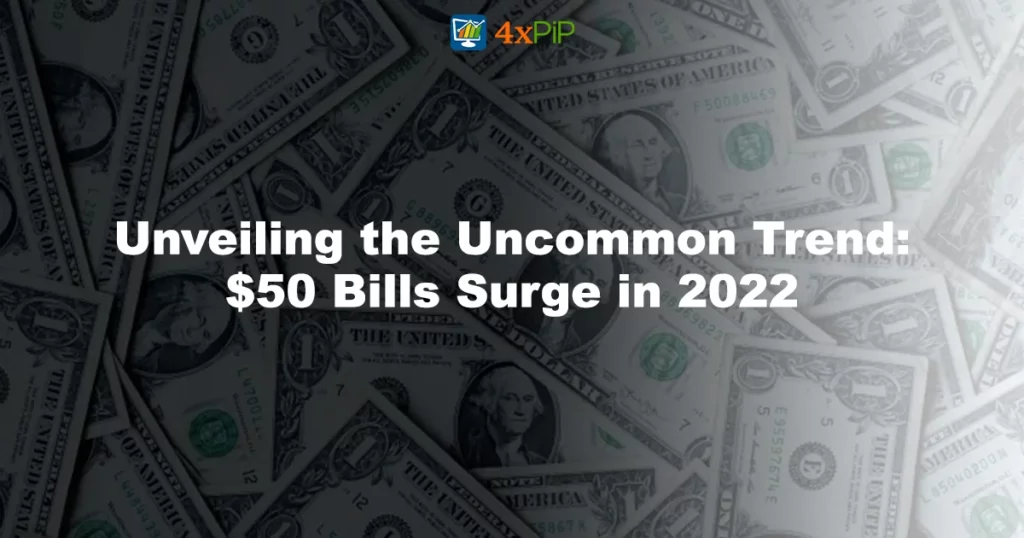If you’re not an avid currency collector or part of the Federal Reserve, you likely missed the fact that last year witnessed a record-breaking print of $50 bills. The highest volume in over was marked by the production of a staggering 756,096,000 bills.
If you weren’t a currency collector or part of the Federal Reserve, you likely missed the record-breaking print of $50 bills in 2022. A staggering 756,096,000 bills marked the highest volume in over four decades.
Traditionally an uncommon denomination, $50 bills constituted only 3.5% of US bills printed in 2019. However, this figure surged to 8.5% in 2022, a notable shift according to the Bureau of Engraving and Printing (BEP).
Surprisingly, this spike isn’t tied to inflation, despite rising costs. Instead, it traces back to the pandemic, where people hoarded cash. Larger bills, including $50s, became preferable for stashing away during uncertain times.
The Federal Reserve acknowledged this shift, attributing its 2022 print order heavily to the COVID-19 pandemic. The subsequent surge in $50 bills was unconventional; historically, this denomination had been one of the rarest orders.
To comprehend the surge, understand the money-printing process. The Federal Reserve estimates demand and orders money from the Bureau of Engraving and Printing, responsible for paper currency.
Despite its prevalence, the $50 bill carries an old superstition, considered unlucky due to President Ulysses S. Grant’s image. Attempts to replace Grant on the bill in 2010 failed, highlighting the $50’s less-than-loved status.
Moreover, people often avoid the bill due to confusion with other denominations. Some stores don’t accept bills larger than $20, and casinos reportedly steer clear, considering them a jinx.
During the lockdown, demand for physical money surged, contradictory to storefront closures and cash use discouragement. Holding cash and daily purchases are separate, as uncertainty prompted people to secure cash for future use.
As the economy stabilizes, the printing of various denominations returned to normal levels in 2023 and 2024, according to the Fed’s orders. While the 2022 surge in $50 bills was significant, 2023 and 2024 orders indicate a return to typical production volumes.
Despite this, American households continue to hold elevated cash reserves. The persistence of significant cash holdings suggests consumers remain cautious, holding onto cash not immediately used for daily purchases.
Summary:
The 2022 surge in $50 bills, reaching a 40-year high, defies the bill’s usual rarity. This unexpected trend, attributed to the pandemic, reveals a shift in people hoarding larger bills for safety. Despite superstitions surrounding the $50 bill, it became a preferred choice during uncertain times. As the economy stabilizes, the Federal Reserve’s print orders return to normal, but American households still hold elevated cash reserves, emphasizing lingering cautiousness.





